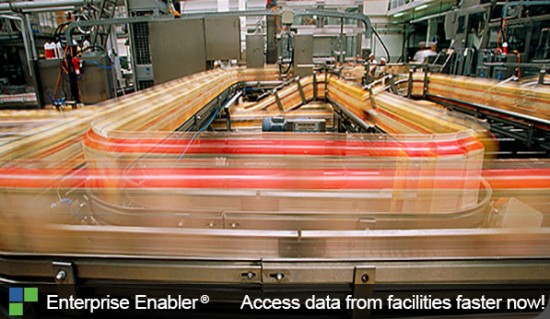Service and Hospitality Industry
Manufacturing Facilities Integration
Manufacturing facilities require integration of information regarding manufacturing assets, distribution channels, manufacturing and transportation costs, warehousing capabilities, and financial targets. Information for these analyses resides in distributed modules including manufacturing asset databases, ERP systems, local sources of cost information, and local scheduling tools.
Because of the independent nature of the different operating units within a manufacturing-based business, implementation of ERP and CRM solutions such as SAP, PeopleSoft, or Siebel can involve many different systems and can be much more difficult and resource-intensive. The need for a unified view of the business across functional and geographical boundaries is the major driver of business projects.
Manufacturing Facilities Integration Model
Create a single view of global customer and operational data
Advantages:
- Capability to integrate information from subsidiary locations within a global operation
- Integrate information relating to individual regional customers to meet regulatory requirements and marketing strategies
- Combine master data with data from other systems and deliver tailored views to diverse applications
- Agility to change and be far more cost-effective than traditional replication-based integration.

Enterprise Enabler ® , dramatically improves the time-to-value of integrations by reducing complexity and leveraging data federation and virtualization. Data Virtualization bridges this gap with software that helps financial institutions to create, deploy, execute, and mange the data services that will really work for enterprise data. Imagine being able to leverage data federalization and Data Virtualization to combine data live from multiple disparate systems and upload it or query it. From dashboards to actionable consoles to secure data exchange with business partners, Enterprise Enabler makes it easy to configure the framework behind the scenes.
Data models in the abstraction layer that sits on top of data sources defines a common view of information. This abstraction layer resolves semantic and format differences. The creation of a common data layer that can deliver the same logical views of integrated data in different format for analytics and other formats for operational integration has many benefits including accuracy and reuse. The data is aggregated in near-real time and combined using data virtualization.This common data layer is also used for all types of Quality control reporting across the company. Data services are then used to gather the needed information and Enterprise Enabler’s Transformation Engine then assembles the obtained information in the format needed by users and applications.
Data virtualization has helped create virtual inventory views across manufacturing, warehousing, transportation and retail locations and systems to provide a real-time accurate view of where there is inventory of each product to allow merchandisers and store managers to make hourly order and stocking decisions. One of the chief benefits of virtualization technology in manufacturing is improved lifecycle management for applications. These applications are business-critical and any unplanned downtime means lost production time. In highly regulated industries, downtime can also compromise data integrity, forcing companies to destroy any product that’s in production.


